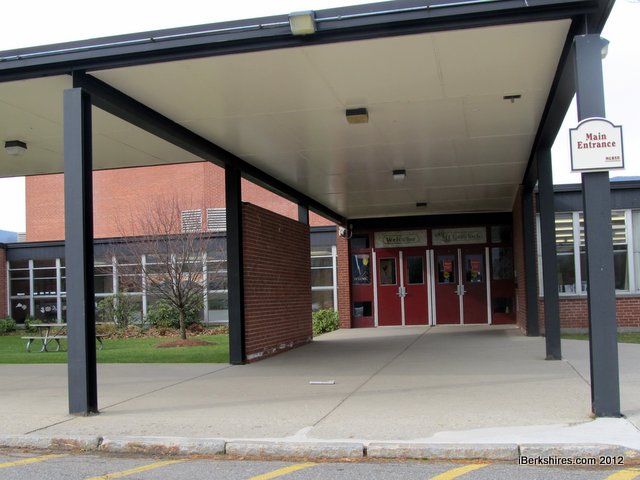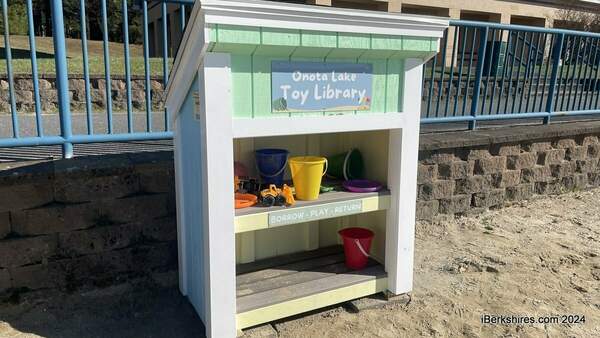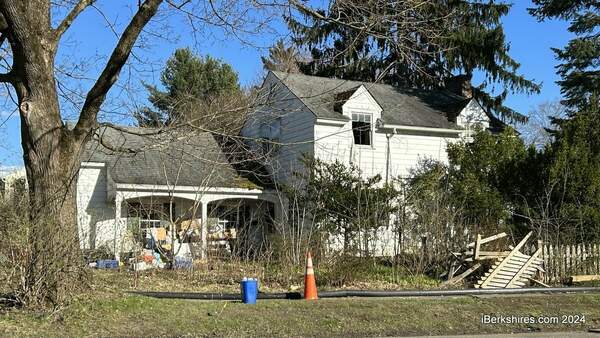Mount Greylock Panel Mulls School's Big, Small Pictures
|
The Mount Greylock High school building subcommittee is looking at near-term fixes and long-term goals. |
WILLIAMSTOWN, Mass. — Mount Greylock Regional High School's building subcommittee is looking at near-term and long-term issues after failing to make the Massachusetts School Building Authority invitation list.
In the near-term, the panel looked at some very preliminary estimates of the cost to address issues highlighted by the New England Association of Schools and Colleges.
The bigger issue is how best to ensure success for the school's next application to the commonwealth's school construction funding authority.
Of course, the two initiatives are very much related.
"For me, the whole issue is not so much whether we get put on probation," School Committee Chairwoman Carolyn Greene said on Friday morning. "It's that NEASC is pointing out the same issues we're very much aware of: the issues with the building that are inhibiting our ability to function to the fullest extent.
"Really, we should worry about how the building is impeding our ability to advance or execute our curriculum. That's why the NEASC question is important. If we move from warning to probation, it's just another indication that we're not able to fulfill our academic mission because of the building."
The regional accrediting agency currently has assigned Mount Greylock the "warning" status because of numerous problems related to the aging structure. This fall, NEASC notified the school it was in danger of being put on probation — one step closer to losing its accreditation — if the district did not demonstrate progress addressing those problems.
Accreditation, of course, is not necessary for the school to function. It is optional.
According to the U.S. Department of Education website, "Accrediting agencies, which are private educational associations of regional or national scope, develop evaluation criteria and conduct peer evaluations to assess whether or not those criteria are met. Institutions and/or programs that request an agency's evaluation and that meet an agency's criteria are then 'accredited' by that agency."
Greene acknowledged Friday that losing accreditation at Mount Greylock is not as dire as it might sound.
"We could drop ourselves from the program," she said. "But lots of schools in New England use NEASC as an accrediting body. We already have been accredited by NEASC, and I think it helps the school."
Of the state's nearly 280 public high schools, 254 are currently accredited and two more have applied, according to NEASC. It has 643 member schools throughout New England.
The fact that the accrediting body is so concerned about the school's deficiencies — in spite of Mount Greylock's high standardized test scores and success at sending graduates to top-tier colleges and universities — helps the district make its case to the Massachusetts School Building Authority.
And Greene said she believes NEASC understands that the current School Committee and Superintendent Rose Ellis are committed to addressing the infrastructure problems.
"I think they know we're serious about addressing issues with the building," Greene said. "They know how hard we're trying to get into the (MSBA) program. And MSBA knows NEASC has these issues. We're caught between these two bureaucracies."
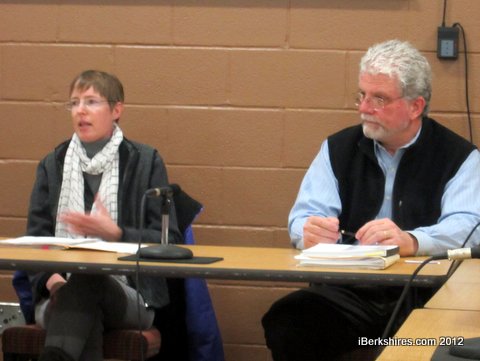 |
|
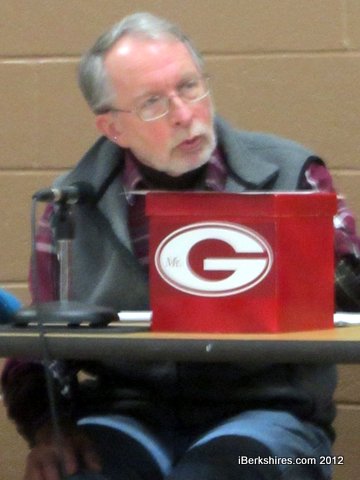 |
Above, Building Subcommittee Chairwoman Carolyn Greene, left, and member Tom Bartels; below, Robert Ericson discusses costs for repairs. |
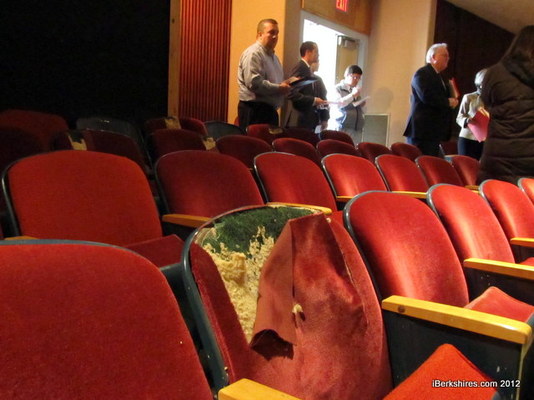 |
|
In order to help Ellis and the School Committee make decisions about the most pressing infrastructure problems, Robert Ericson — who serves with Greene on both the School Committee and building subcommittee — prepared a spreadsheet with preliminary cost estimates.
Ericson investigated potential costs to improve the school's auditorium, renovate its science labs and bring its restrooms into compliance with the Americans with Disabilities Act — three areas targeted in the most recent NEASC letter.
"These are very rough numbers to give us an idea," Ericson emphasized at Thursday's meeting of the Building Committee. "Labor costs are very amorphous."
At several points, Ericson estimated costs assuming that certain work could be performed by school personnel but acknowledged the projects in question ultimately could involve bringing in outside contractors, which could add to the cost.
And his estimates were for the bare minimum of work needed to show that the school was doing something to address much bigger problems that only could be solved with the kind of project the MSBA would need to fund — most likely a new building, in the case of Mount Greylock.
"It would probably cost $300,000 to do the NEASC fixes to the auditorium, but that doesn't even bring it to code," Greene said during the meeting.
Even the preliminary numbers on the areas Ericson addressed ran into the hundreds of thousands of dollars — price tags that ultimately may be too high for a building that the district is working very hard to replace.
But Greene indicated Thursday that the goal is not so much to make all the fixes on Ericson's list but to prioritize and demonstrate progress to the accrediting body.
"We can give NEASC a plan and say this is what we'll do this year and this is what we'll do next year," she said. "We'll tell them we can't put $500,000 into the auditorium. We just can't.
"Part of their frustration is that nothing was done for years. Now we have an administration that is responsive. ... It is a bit of a dialogue. We can tell NEASC now we have numbers and we'll get better numbers."
And whatever improvements the district does make between now and construction of a new school will not affect the district's chances of getting into the MSBA funding process, according to the authority's executive director.
"Those kinds of solutions would not mitigate a problem in my eyes," Jack McCarthy said on Wednesday during a site visit to Mount Greylock.
After talking about possible short-term solutions, the building subcommittee turned its attention to the district's next "statement of interest" to file with MSBA. Following on advice McCarthy shared on Wednesday, committee members pledged that the next application will emphasize the degree of community support for a comprehensive solutions to the building's problems.
To demonstrate that support, the subcommittee plans to seek letters of support from town officials, including the Williamstown and Lanesborough Boards of Selectmen, and to recruit residents to serve on building planning task forces.
Subcommittee member Paula Consolini said such task forces were invaluable during the planning stages for Williamstown Elementary School, and she suggested a wide variety of topics for those task forces to address — from finance and development to classroom design to energy efficiency.
"Task forces are an efficient way to draw people and talent without subjecting them to the bureaucracy we have to deal with," Consolini said.
Tags: MGRHS, MSBA, NEASC, school building committee, school project,

